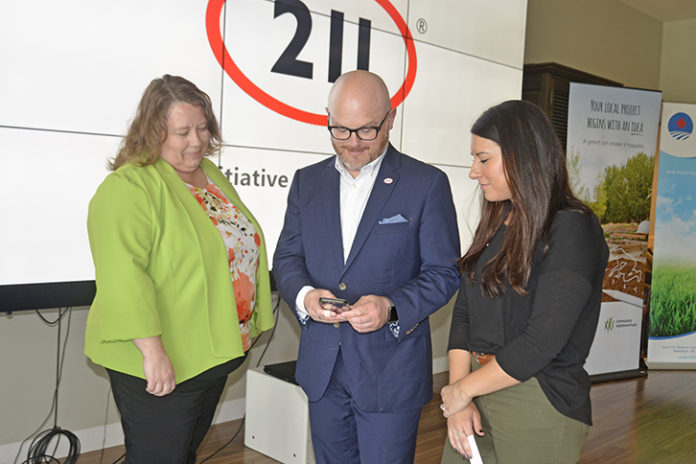
Southwest Saskatchewan residents now have a new way to reach out and find the supports they need.
The official expansion of the 211 service across Saskatchewan which was announced on Monday is intended to help remove the barriers to finding an connecting with resources and agencies. These supports range from basic needs such as food, shelter and employment, along with mental health, addictions, violence and abuse, crisis and healthcare.
The 211 service, an initiative of the United Way, helps people locate and access one of the over 5,000 government, community and social programs and services in their database which exist across the province.
People can use their searchable website (www.sk.211.ca) and web chat services, or contact 211 by text or simply by calling 211.
“When you’re confused, when you’re in stress, when you’re in a crisis point, when you do not know where you’re going… you may not even know there is help available. And with a simple number like 211, you can text, enter it into your phone, hit text, and say this is what I need, can you help me,” explained United Way of Saskatoon and Area CEO Shaun Dyer.
Monday marked the start of the rural rollout of the 211 Saskatchewan Roadshow, where representatives from the Regina and Saskatoon United Way’s helped share the provide wide benefits of this expanded service.
Robyn Edwards-Bentz, CEO of United Way Regina, said they had been hearing from many service providers that it is often hard for their clients to find the services they need when they need them the most.
“We’re excited about the opportunity to be able to let them search independently, confidentially, find the services that they need, and find the resources,” Edwards-Bentz said.
The 211 website started in Saskatchewan back in 2013, but the service expansion only became possible with funding from the Community Initiatives Fund and CanPacific Potash.
Last year, the website received 110,000 inquiries despite being not widely known. This use has provided the United Way some useful insights into what services and programs are being sought the most.
“It depends on the time of the year. There’ll be increases and decreases. Very typically homelessness, food insecurity, financial assistance, those are the top searches that people are looking for support. But it definitely differs from north to south of the province. And so that is really important. We can’t just look at the whole province and say overall this is what we need, and it’s consistent across the province. It isn’t. And so to be able to look at different parts of the province, different cities, will be really useful information for us going forward,” Edwards-Bentz said.
Stacey Schwartz, Executive Director of the Swift Current United Way, said 211 will be an important resources for the Southwest.
“Because our region is a lot of rural communities, isolation, that’s a hard reality of what limits people from accessing certain resources. I think 211 is going to help begin to bridge that gap.”
Schwartz added that the users of 211 will help improve the services which are provided in the region by providing the evidence based data which will guide and direct services providers to expand existing or creating new services.
“211 has given us, as a community and a province, the opportunity to find out first-hand from those requesting the services what their greatest needs are, not just provincially, but the opportunity to gain insight based on regions and specific communities.”
“I do believe that this is a great start to begin to meet the gaps of many of our rural communities and what they experience when looking for help and available resources in their area.”
A call centre based in British Columbia is handling the call, text and web chat services, providing information 24 hours a day, seven days a week. They are able to share information in over 100 languages, including seven first nation languages.
“It furthers our vision to help everybody in our communities thrive and access the supports and get ahead in their life. So it’s consistent with our vision. We’re going to use the data we derive from it to help us shape our community investment, help communicate with government and other service agencies that are providing the services to give them some really valuable intel on how best to sharpen those services and supports. I think it’s going to do a lot of different things that are quite positive for our province,” Dyer added.





